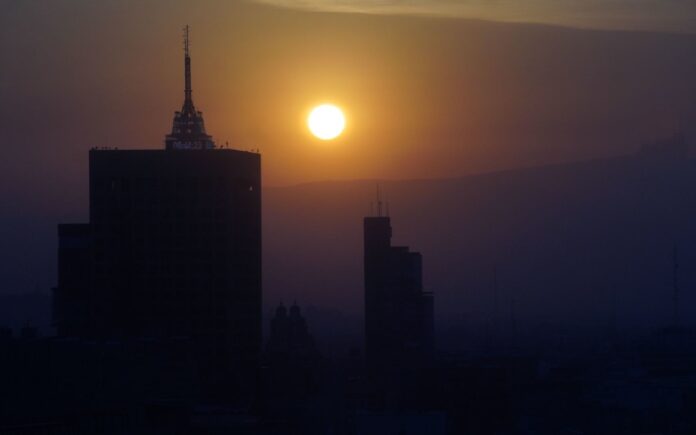Globally, Mexico is ranked number 49, with a rating of 19.5 –3 and 5 times higher than the WHO guidelines
IQAir, a Swiss company specialized in the development of air quality technology, published on its website the air quality index by country in 2022, classifying them from the worst quality to the best.
The list is prepared taking into account the concentration of PM2.5 particles (particulate matter that includes organic chemical substances, dust, soot and metals), and which are used to determine the levels of contamination that it presents, generating an annual average, which is subsequently can be averaged over a particular time period.
Within the ranking, there is also a sub-classification that reveals how much higher the concentration of particles is than that recommended by the World Health Organization, and is distributed as follows:
0-5 > meets WHO guidelines
5.1-10 > 1 to 2 times higher
10.1-15 > 2 to 3 times higher
15.1-25 > 3 to 5 times higher
25.1-35 > 5 to 7 times higher
35.1-50 > 7 to 10 times higher
Greater than 50 > more than 10 times higher
The first place on the list corresponds to Chad, in Africa, whose amount of pollution in 2022 was 89.7 PM2.5 on average during the year, well above the WHO recommendations.
In the classification they are followed by Iraq (80.1), Pakistan (70.9), Bahrain (66.6) and Bangladesh (65.8) closing the first five; while Burkina Faso (63), Kuwait (55.6) and India (53.3), are the other cities whose index is ten times higher than what is established as optimal.
Globally, Mexico is ranked number 49, with a rating in 2022 of 19.5, which is between 3 and 5 times higher than the WHO guidelines but without reaching critical levels. At the continental level, the country ranks third, with Peru (23.5) occupying the first position and Chile (22.2) the second.
Internally, the highest concentration of PM2.5 particles was found in Metepec (36.1) and Xonacatlan (28.5), both in the State of Mexico, Guadalajara (26.7), Jalisco, and San Miguel (26.2).
Mexico City, as a whole, ranks eighth with an average of 22.1, and the Alvaro Obregón, Benito Juárez and Coyoacán delegations had the greatest impact on the ranking.
At the end of July, experts from the National Autonomous University of Mexico (UNAM) warned that in our country, poor air quality is a problem, especially in urban areas where the population, vehicle fleet and industry multiply, especially all outside of the large metropolitan areas.
“Air quality continues to be one of the main topics of analysis for ICAyCC experts, who make a great effort to have forecasting capabilities, climate change scenarios, alerts and where prevention, mitigation and adaptation measures are proposed”, said the director of that academic entity, Jorge Zavala Hidalgo, who moderated the dialogue table “The future of air quality.”
Also an ICAyCC researcher, Graciela Binimelis de Raga, recalled that in 2019 99 percent of the world population lived in places where the recommendation for PM 2.5 particle emissions was not met.
Binimelis de Raga assured that there is progress globally in terms of actions to reduce air pollution, but there is still a long way to go for the majority to breathe clean air. “There are still many countries in the world that do not even have air quality monitoring networks.”
Poor quality is just one of the manifestations of environmental deterioration, which is combined with other situations such as climate change and problems on a temporal and spatial scale.
Source: Aristegui Noticias






